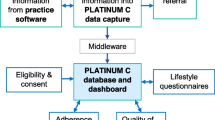Abstract
The introduction of highly efficacious direct-acting antiviral (DAA) treatment therapeutics presents new opportunities to both directly reduce chronic hepatitis C virus (HCV) prevalence and prevent the onward transmission of HCV. To achieve the equitable scale-up of DAA interventions at the population level, however, reductions in HCV incidence and prevalence must be achieved among entire populations of people living with HCV—all in “real-world” conditions. In this commentary, we describe five problem areas that will benefit from new investments in implementation science in order to inform the scale-up of DAA interventions: (1) New evidence is needed to optimize the integration of DAA treatments into generalist models of care; (2) DAA scale-up needs to be adaptive to the needs of highly diverse and large populations living with HCV who will benefit from DAA interventions; (3) we need to do better at measuring and responding to features of implementation context; (4) costs need to be explicitly assessed in “real time”; and (5) new research-community-practice partnerships are needed to inform evolving HCV testing, treatment and prevention guidelines, policies, and programs. We offer solutions to address these problem areas, with an emphasis on describing how investments in implementation science can address each of these challenges “head on.”
Résumé
L’introduction des traitements thérapeutiques très efficaces d’antiviraux à action directe (AAD) présente de nouvelles opportunités pour réduire directement la prévalence chronique du virus de l’hépatite C (VHC) et pour prévenir la transmission ultérieure du VHC. Cependant, afin d’atteindre une mise à l’échelle équitable des interventions d’AAD au niveau de la population, des réductions de l’incidence et de la prévalence du VHC sont nécessaires au sein de la population entière des personnes vivant avec le VHC et ce, en tenant compte des conditions réelles. Dans ce commentaire, nous décrivons cinq problématiques qui bénéficieront de nouveaux investissements en science de la mise en œuvre pour informer la mise à l’échelle des interventions d’AAD : (1) De nouvelles données scientifiques sont nécessaires pour optimiser l’intégration des traitements de AAD dans les modèles de soins généralistes; (2) La mise en place à grande échelle doit être adaptée aux besoins des diverses populations qui vivent avec le VHC et qui bénéficieront des interventions d’AAD; (3) Nous devons améliorer nos mesures et nos interventions dans le contexte de la mise en œuvre; (4) Les coûts doivent être évalués de façon explicite et en temps réel; et (5) De nouveaux partenariats entre les chercheurs, la communauté et les professionnels de la santé sont nécessaires pour informer le dépistage, les directives de traitement et prévention du VHC, les politiques et les programmes. Nous proposons des solutions pour répondre aux problèmes soulignés, en mettant l’accent sur la façon par laquelle les investissements en science de la mise en œuvre peuvent adresser chaque défi.
Similar content being viewed by others
References
Bird, K., Socías, M. E., & Ti, L. (2018). Integrating hepatitis C and addiction care for people who inject drugs in the era of direct-acting antiviral therapy. The International Journal on Drug Policy, 59, 1–2.
Blanchard, J. F., & Aral, S. O. (2010). Program science: an initiative to improve the planning, implementation and evaluation of HIV/sexually transmitted infection prevention programmes. The Medical Society for the Study of Venereal Disease.
Chaudoir, S. R., Dugan, A. G., & Barr, C. H. (2013). Measuring factors affecting implementation of health innovations: a systematic review of structural, organizational, provider, patient, and innovation level measures. Implementation Science, 8(1), 22.
Damschroder, L. J., & Lowery, J. C. (2013). Evaluation of a large-scale weight management program using the consolidated framework for implementation research (CFIR). Implementation Science, 8, 51.
Kattakuzhy, S., Gross, C., Emmanuel, B., Teferi, G., Jenkins, V., Silk, R., et al. (2017). Expansion of treatment for hepatitis C virus infection by task shifting to community-based nonspecialist providers: a nonrandomized clinical trial. Annals of Internal Medicine, 167(5), 311–318.
Martin, N. K., Vickerman, P., Grebely, J., Hellard, M., Hutchinson, S. J., Lima, V. D., et al. (2013). Hepatitis C virus treatment for prevention among people who inject drugs: modeling treatment scale-up in the age of direct-acting antivirals. Hepatology, 58(5), 1598–1609.
Pearlman, B. L., & Traub, N. (2011). Sustained virologic response to antiviral therapy for chronic hepatitis C virus infection: a cure and so much more. Clinical Infectious Diseases, 52(7), 889–900.
Proctor, E., Silmere, H., Raghavan, R., Hovmand, P., Aarons, G., Bunger, A., et al. (2011). Outcomes for implementation research: conceptual distinctions, measurement challenges, and research agenda. Administration and Policy in Mental Health and Mental Health Services Research, 38(2), 65–76.
Scott, N., Hainsworth, S. W., Sacks-Davis, R., Pedrana, A., Doyle, J., Wade, A., et al. (2018). Heterogeneity in hepatitis C treatment prescribing and uptake in Australia: a geospatial analysis of a year of unrestricted treatment access. Journal of Virus Eradication 4(2), 108.
Shoveller, J., Viehbeck, S., Di Ruggiero, E., Greyson, D., Thomson, K., & Knight, R. (2016). A critical examination of representations of context within research on population health interventions. Critical Public Health, 26(5), 487–500.
van Santen, D. K., van der Helm, J. J., Lindenburg, K., van der Loeff, M. S., & Prins, M. (2017). HIV and hepatitis C treatment uptake among people who use drugs participating in the Amsterdam Cohort Studies, 1985–2015. The International Journal on Drug Policy, 47, 95–101.
World Health Organization. Hepatitis C. 2018.
Acknowledgements
Knight and Ti are supported by Michael Smith Foundation for Health Research Scholar Award. US NIH Grant Number: 1R01DA043408-01.
Author information
Authors and Affiliations
Corresponding author
Additional information
Publisher’s Note
Springer Nature remains neutral with regard to jurisdictional claims in published maps and institutional affiliations.
Rights and permissions
About this article
Cite this article
Knight, R., Ti, M. The successful scale-up of direct-acting antiviral hepatitis C treatments will benefit from concerted investments in implementation science. Can J Public Health 110, 376–379 (2019). https://doi.org/10.17269/s41997-018-0164-0
Received:
Accepted:
Published:
Issue Date:
DOI: https://doi.org/10.17269/s41997-018-0164-0




